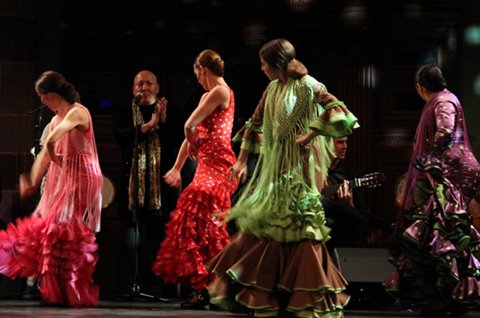El Patio Andaluz

El Patio Andaluz has become a flamenco landmark in Barcelona. Shows are full of tradition and passion thanks to great flamenco artists.
A tablao is managed by the famous dancer Jesús Cortés, winner of the National Flamenco Dance Prize (Premio Nacional de Danza Flamenca) .
Furthermore, visitors can taste the delicious Spanish cuisine. You cannot miss this unique experience.
Practical Information
- Capacity: 130
Location
Carrer de Rocafort, 231
Barcelona
Glossary of flamenco
Granaína or granadina is a flamenco style that derives from “fandangos”. It is usually included in “malagueños” styles with origin in "verdiales".
Levantica is a palo flamenco that belongs to “cantes de Levante”. It was born during the 19th century in the mining area of Sierra of Cartagena-la Union.
Cantiñas is a group of “palos” flamencos which are characteristic of Cadiz, los Puertos and Jerez de la Frontera.
Media is a flamenco “palo” which belongs to “cantes de Levante” together with"granaina".